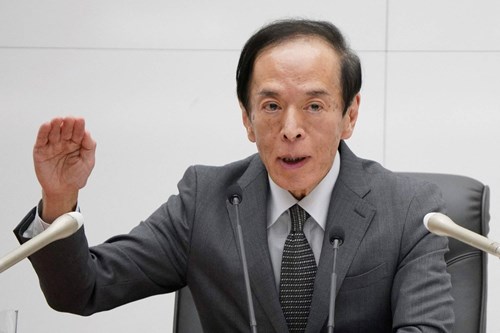
Markets ended the week mixed amidst a number of key data releases and central bank statements. The S&P 500 came close to matching its longest winning streak on Wednesday but that was derailed by hawkish comments from Jerome Powell, the Federal Reserve Chair. He stated that the Fed would not hesitate to tighten monetary policy further if needed to contain inflation which raised expectations that interest rates will remain higher for longer. The Federal Open Market Committee (FOMC) has held rates steady since July. These comments, combined with a weak 30-year US treasury auction caused yields to rise.
Meanwhile, in Europe, government bond yields also broadly climbed as markets digested the prospect of interest rates remaining higher for longer following hawkish comments from European Central Bank (ECB) President Christine Lagarde. She stated that it would take more than “the next couple of quarters” for the ECB to start cutting rates. The yield on Germany’s 10-year government bond rose above 2.7%1 and Italian bond yields also ticked higher. UK bond yields experienced a volatile week after data showed the economy stagnated in the third quarter. Last week, the Bank of England kept its main interest rate at 5.25%2 and said rates would need to stay there for an extended period. Comments that market pricing pointing towards a first rate cut in August 2024 didn’t sound unreasonable triggered a sharp decline in short-dated government bond yields.
Elsewhere, Bank of Japan (BoJ) Governor Kazuo Ueda warned that normalising short-term interest rates would be a serious challenge due to the potential impact on financial institutions, borrowers, and aggregate demand. Speaking at a conference, he said that it was too early to determine what specifically the central bank would do when it normalised its policy stance but added that the bank was making progress toward reaching its 2% inflation target3. Japanese government bond (JGB) yields remain elevated following the BoJ’s October adjustment of its policy of yield curve control, which was the second tweak in three months. This effectively means they will allow yields to rise more freely, indicating they will use the 1% ceiling for 10-year JGB yields as a reference rather than strictly capping interest rates at that upper bound. However, Governor Ueda has repeatedly stated that the 10-year JGB yield is unlikely to rise significantly above 1%.

Over the past week, China’s economy edged back into deflation as consumer prices contracted. It has been a difficult year for the region and recent data has added to concerns that there is more pain to come. Despite Beijing’s efforts to prop up demand, more action will be required to counter deflationary pressures. The latest readings underscored the fragility of China’s economy and appeared to add to concerns that growth has not yet bottomed. Policymakers have struggled to fire up domestic demand and are still feeling the effect of the property sector crisis and slower-than-expected reopening after Covid.
The coming week will be a busy one, as final earnings of the season trickle through which will give more insight into the broad health of the economy. The latest inflation figures will be released on Tuesday, national retail sales for October will be announced on Wednesday and we expect updates on the housing market at the end of the week.
The undecided national budget looms over the US economy and if Congress fail to pass a series of spending bills or agree on another temporary resolution, a shutdown could be imminent.
Time is steadily ticking towards year end and more volatility could be in store. For long-term investors, we are mindful of the macro-economic environment but avoid getting caught up in the noise of the headlines. We will continue to focus on our investments and keep our eyes peeled for any opportunities further volatility may bring.
Sources:

